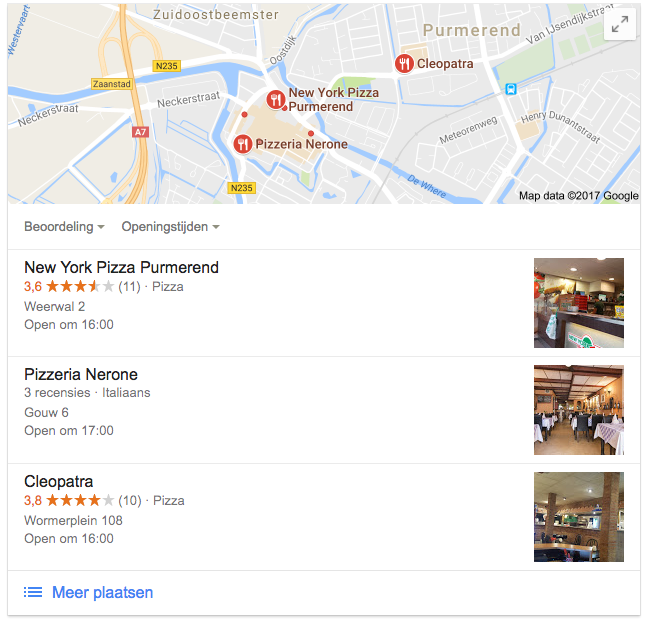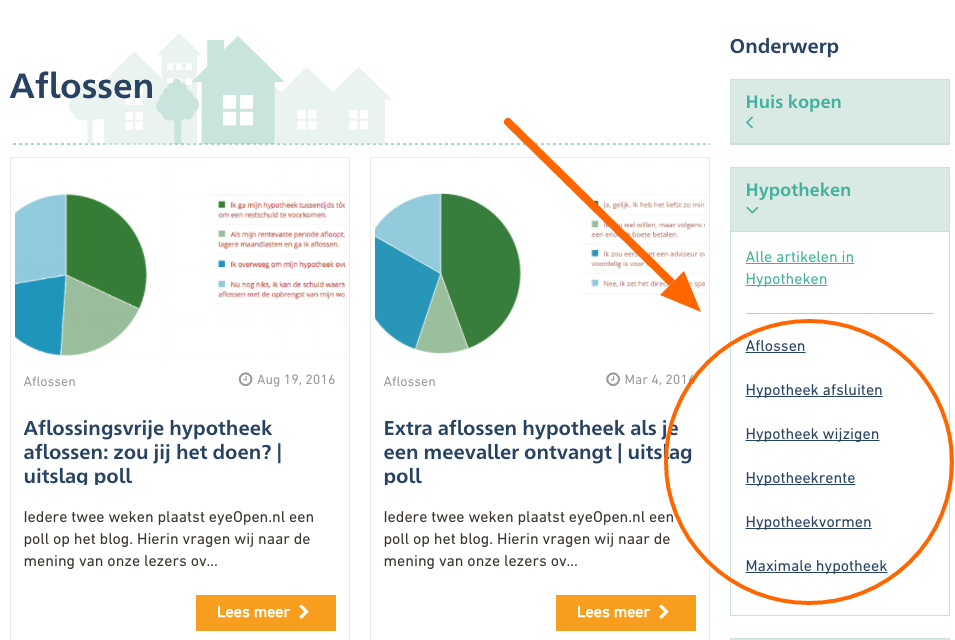Despite the fact that content marketing has changed a lot in recent years, content B2B organizations often still run into the same pain points they did five years ago.
For example:
"I'm having trouble measuring the ROI of my content."
"We create great content, yet we don't get high rankings in Google despite our targeted keywords."
"I did a keyword research, how to proceed?"
Many marketers answer these problems (and especially the second one) by even creating more content. Unfortunately, it doesn't work that easily.
By creating more content of the same quality, you (often) get the same results. The answer to these problems does require a little more than scaling up the number of blog articles.
The answer does not lie here. It does lie in the way you make choices in the content topics.
Search engines are changing
The many updates from search engines like Google and Bing, cause search engines to process and rate content differently all the time. As a result, the performance of your content keeps changing.
Right now, you probably judge the performance of your content by looking at keyword rankings from the search engines. However, there is already much debate about this, whether keyword ranking is really a good statistic. After all, ranking depends primarily on context.
More simply put: depending on how and where you search, you will get different search results.

A simple search such as "eat pizza" illustrates this perfectly. If you search for this question from Purmerend you will get completely different results than if someone searches from Limburg. Indeed, thousands of different variations of this results page probably exist at any given time.
In addition to keyword ranking issues, the search engines have also determined how the content of your blog articles should be structured.
In particular, the increased previews of a search result.
Google increasingly shows a preview of a search result already, so that the searcher already has an answer to a question, without having to click on the link (see example above). Because a visitor then sees that that page offers relevant information, it often gets more traffic than search results that don't have a preview.
Therefore, you should try to structure your content so that the most relevant information will appear in the preview. Wikipedia, for example, already does this very well.
If you now search for Donald Trump in Google, you will immediately see this preview with all the relevant information about Trump:

As is well known, Google is particularly concerned to provide more relevant search results to the searcher.
Through "Machine learning" and "RankBrain," which index and rate content, Google has the ability to understand the intent of a search query, without the search query being explicitly stated in the content. In this way, more relevant search results are created.
Result: searchers' behavior changes
How the search engines evolve is as important as how the searcher interacts with the search engines.
Searches today are more conversational, this is mainly due to the growth of mobile and voice search. The Google updates of the past 2-3 years were mainly focused on better understanding search queries through natural language processing - particularly the Hummingbird update. 20% of mobile searches are voice searches, indicates Google.
What does this mean for your content strategy?
Instead of focusing on 1 keyword, it is better to focus on your main topic/topic, where you then find all kinds of "subtopics" that support your main topic.
Finally, within those subtopics, you then grab your blog topics!
This may sound cumbersome, but it's simpler than you think. Choose one main topic and around it all the subtopics and blogs that support the main topic.
Example: eyeopen.co.uk
Eyeopen sells mortgage advice.
1 of their main topics of their content strategy is of course 'Mortgages'. What you see on their blog is that they have then broken down this main topic into sub-topics such as 'repayment', 'mortgage modification', 'mortgage closing', etc.
Within these subtopics, they then categorized their blog content:
- Redemption
- Mortgage closing
- Change mortgage
- Mortgage interest rate
- Mortgage types
- Maximum mortgage

The role of the various subtopics is to broadly cover the main topic, provide the visitor with more relevant information and ensure that visitors are convinced of your expertise.
The advantage of a "topic cluster" is that you can spend much more time optimizing your content for conversions. This saves you much more time than optimizing each content individually for a conversion. In addition, you make it easier for yourself to create a good user experience and get a positive indexation in search engines.
How do you create a Topic Cluster for your business?
Okay, we now know what a topic cluster is and its benefit. But how exactly do you make a proper topic cluster?
Follow the steps below:
1. Identify the 5 to 10 most important problems your target audience is experiencing. You can do this through surveys, interviews, and secondary research within online communities. You can link these problems to your buyers persona.
2. Divide each problem into a broad topic area.
3. Expand each main topic with subtopics, you can do this after keyword research.
4. Then come up with blog ideas that fit the topics
5. Next, see what your competitors are writing about the topic
6. Once you have followed all the steps, you can start writing with all the new inspiration. Measure the results and optimize. Again and again!
The image below is a simple overview to visualize your content by section. But this will give you a good overview of where your priorities lie and how to proceed.
At SearchUser, for example, we focus on 3 main services. The little dots illustrate the subtopics, but we categorize our blogs within these 3 main topics.

Finally: search engines aren't looking for your content, people are
What a topic cluster actually ensures is that you create content that people really want to see and not specifically for search engines. Search engines today are smarter than you think and in most cases they are not looking for a specific keyword, it's about making sure that your content is relevant to the searchers.
By shifting your mindset to that you are no longer focusing your content on a keyword, but rather on topics, you will create better content. This will make you appear higher in search results and create a positive visitor experience.
How do you measure the success of your topic cluster?
This is one of the most common questions content marketers ask: "how can I measure the success of my content?".
We don't really have one clear answer to this question. In fact, it is not a good idea to look at the success of one blog post, because it is not really representative. But then again, this way you forget to take into account the indirect benefits that one such blog post brings.
In fact, the success of content depends on many more factors. And success is not just generating sales or collecting email addresses. Success is also increasing your company's brand awareness, attracting new staff or being caught by the press.
Take, for example, an "about us" page on a Web site. If you were to judge this page individually for success, this page probably performs for zero. But on the other hand, this page may have more than 5,000 backlinks on external Web sites and you may have a huge number of potential employees visiting the page.
Therefore, it is best to evaluate content at the topic cluster level.
By looking at an entire cluster, you can include all results, including content that doesn't have a direct conversion goal. That way, you'll find out which topics generate more traffic, which collect the most leads, which create more sales and which ones get you the most backlinks.
Need help with content creation? Get in touch with our content marketer!
